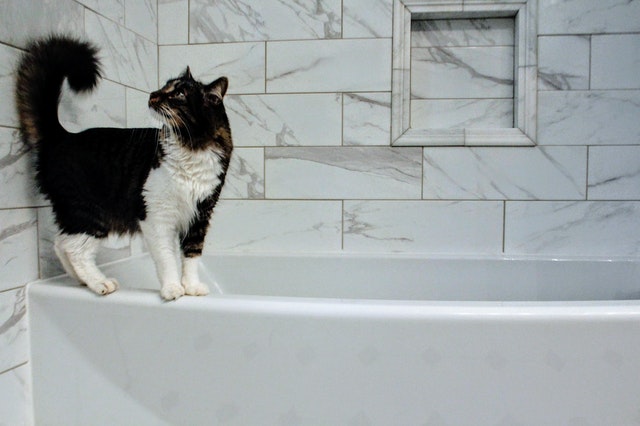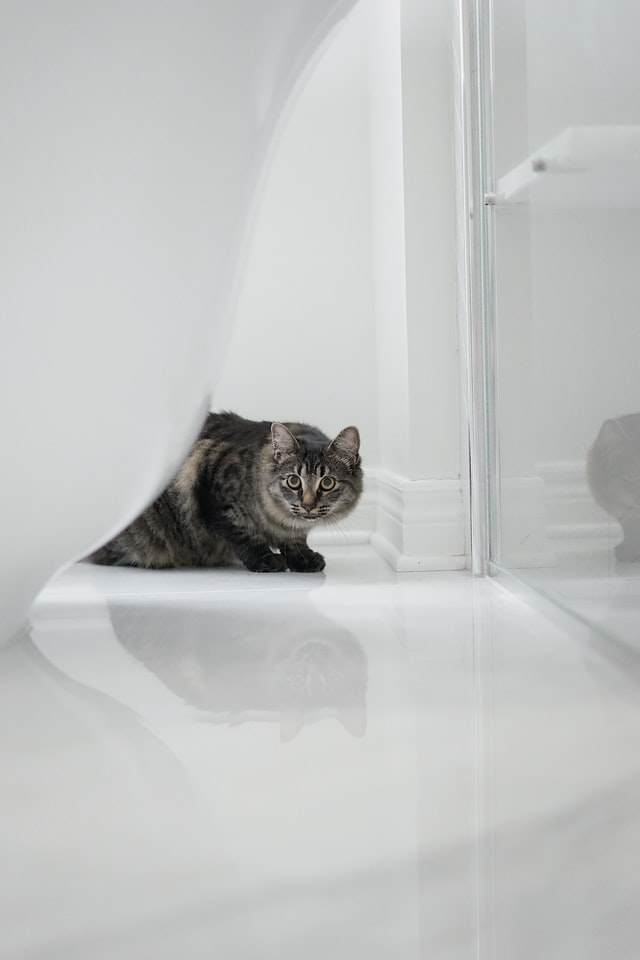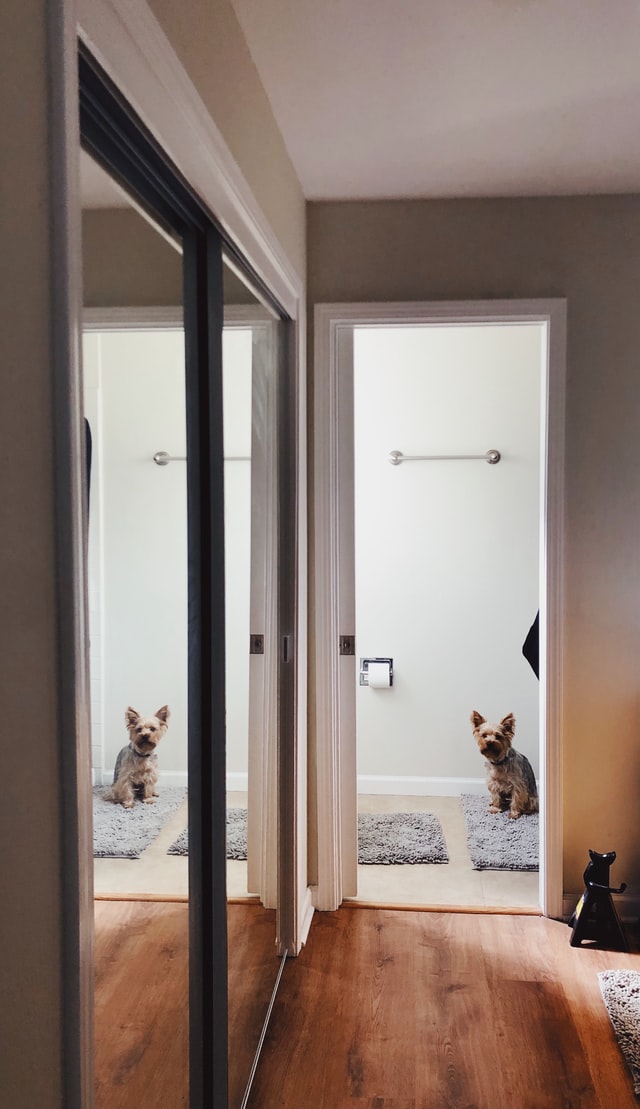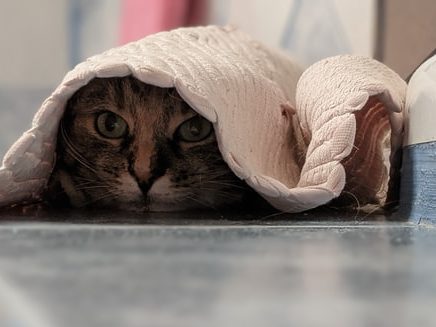There’s no disputing that our pets are a source of joy and companionship in our lives. However, this doesn’t mean to say they aren’t occasionally a cause of frustration, mess, and concern too! One common form of recurring pet behavior that can have you pulling your hair out is finding your furry companion face-deep in the bowl of your toilet.
There are various ways this could be a recipe for complications. Their lapping and splashing as they guzzle the water can cause an excessive amount of mess on and around your toilet — and you certainly don’t want to first discover this when you unwittingly sit on it! If you have a wobbly toilet, your pet’s body weight might cause additional damage before you get the chance to fix it. But far and away the most common concern pet owners have is whether they’ll be taking a trip to the veterinarian as a result of this consumption.
So, is toilet water harmful for pets?
In most cases it isn’t directly harmful, particularly if your pet doesn’t make a habit of it. They are unlikely to experience any long term or even fatal effects. However, there are a few elements that can present risks, and it’s worth exploring these so you can react in an informed manner.



What are the Risks?
Local Water Quality
Water quality is a big issue today, and not just in developing areas of the world. While U.S. water quality is considered to be generally safe, there is some serious cause for concern on a local level. As such, the area, environment, even the home you live in can impact whether your toilet water is harmful to your pet.
One example here is the presence of lead contamination. Even small amounts of lead in the water can be enough to cause a diverse range of short and long term issues like vomiting, tremors, seizures, and impaired vision. While legislation to remove lead plumbing components that serve drinking water systems has been steadily implemented since 1986, the pipes serving your bathroom may not necessarily fall under this definition. Indeed, in older homes it is common for lead solder to be used even with copper piping. As such, if your bathroom plumbing contains any lead components your toilet water is potentially harmful to your pet.
Another key contamination concern are per- and polyfluoroalkyl substances (PFAs). These are known as “forever chemicals” and have found their way into the water system through long term industrial waste and pollution. Exposure to PFAs has been linked to some types of cancer and developmental issues. One of the most effective ways to avoid drinking PFA tainted fluid is by utilizing a water filtration pitcher that removes these chemicals along with other contaminants and heavy metals. However, when your pet is drinking from the toilet it bypassess this precaution and over a period of time may be subjected to harmful PFAs.
Infection
It’s a given that you have a routine designed to keep your toilet clean and free of germs. However, even with the best will in the world your bathroom is still a hotbed of nasty bacteria that when consumed can lead to your pet becoming very ill. Perhaps the most prevalent of these is E. coli. This breeds in intestinal tracts and can be spread to your toilet bowl through both feces and urea. Sure, it’s not a pretty picture to think about, but this is the reality of what your pet is exposed to when they’re chugging your toilet water.
E.coli and the assorted germs around your toilet can very easily lead to your pet experiencing gastrointestinal upset and other forms of bacterial infection. While most of these aren’t harmful in the long-term, it can almost certainly result in an uncomfortable time for your pet and an expensive vet bill for you.
Household Chemicals
In your tireless efforts to keep your toilet clean of the aforementioned bacteria, it’s likely you’ll be using some harsh chemicals in the process. Unfortunately, this presents another serious risk if your pet has a tendency to treat your bathroom like its own personal watering hole. Most of the common chemicals used for cleaning are highly toxic when consumed.
In fact, this is a particularly serious issue for small animals. Drinking water contaminated by the chemicals found in chlorine bleach products — sodium hypochlorite, sodium peroxide, sodium perborate — may be lethal in some circumstances. Even when heavily diluted, it can be the cause of an upset stomach.
Submersion
If you have a small pet — a toy dog or a cat —there are also small risks inherent in your pet falling into the toilet. No, this isn’t likely to result in drowning. Rather, the risk of submersion comes from your pet soaking their coat in toilet water. Either as a result of bacteria or chemical content in the water, this may lead to your pet’s skin or eyes becoming infected or irritated. Indeed, as animals clean themselves with their tongues, their attempts to remove the nasty water can result in accidental ingestion. This isn’t a significant risk, but it can occur.

How Can You Prevent Problems?
So, there are some risks, but there are also a few ways you can prevent your pet from heading to the toilet for hydration.
Shut Your Pet Out of the Bathroom
The simplest answer to this issue is just minimizing their access to the toilet in the first place. Closing the toilet lid can be effective, but if you have larger animals this may not be much of a deterrent — they’ll figure out how to lift it. As such, it may be worth getting into the habit of shutting the bathroom door after use. Even if this isn’t your preferred option, you should certainly be doing this after cleaning it with chemicals, at least for a few hours.
Repair any Noisy Issues
One of the reasons your pet is attracted to the toilet could be the noises the system is making. Anything unusual is likely to spark their curiosity. Frankly, if your toilet is making noises aside from the flushing and filling, you should be curious, too! Any excessive dripping or hissing sounds need to be inspected and repaired. Not only will this help your toilet function more effectively, but it could prevent your pet’s attention being drawn to the bowl.
Keep them Hydrated
If your pet frequently goes to the bathroom to drink, it may be the case they don’t have access to enough fresh water elsewhere. Make sure there are a couple of different bowls throughout your home for them to drink from. Clean these at least daily, and make sure they are topped up with fresh water frequently.
Conclusion
As with so many such issues, the question of whether toilet water is harmful to pets depends on the circumstances. The most important factor to consider is the composition of the water. You need to understand what household and industrial chemicals, heavy metals, or bacteria are contaminating it. While the water quality may be outside of your control, this doesn’t mean you’re entirely powerless. Some simple preventative measures can draw them away from the toilet bowl, reducing the potential for any health issues to arise.
